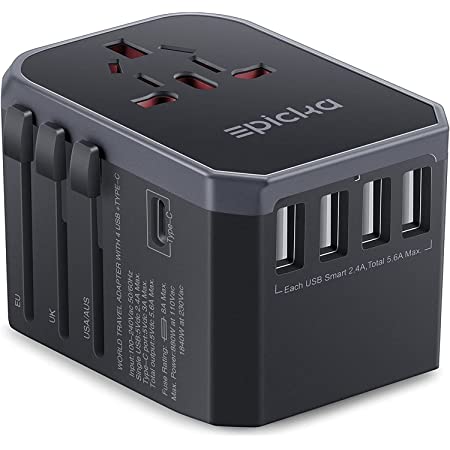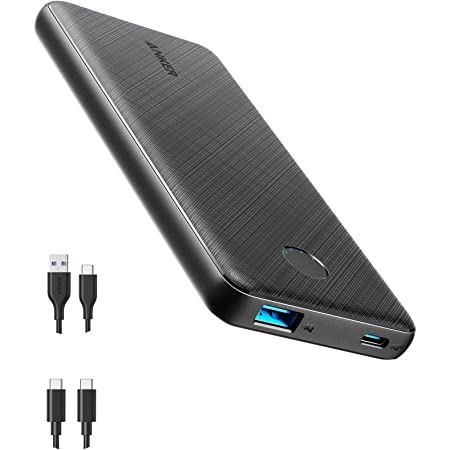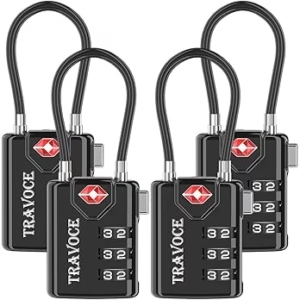Plug For Tanzania: What You Need To Know
What is the plug for Tanzania? Before you travel, check the information below to make sure your electronic devices are compatible with the outlet type and voltage.
Electrical Summary
Tanzania uses outlet types D, G at a voltage of 230V and a frequency of 50 Hz.
Plug Compatibility: Type D, Type G
Voltage: 230V
Frequency: 50 Hz
Type D

Type G

Can North Americans use Electronics in Tanzania without an Adapter?
No! North Americans will need an adapter for the outlets and a transformer for the voltage when traveling to Tanzania. North Americans device plugs will not work with the outlet types in Tanzania. Also, the voltage in Tanzania is different from North American voltages.
Can Europeans use Electronics in Tanzania without an adapter?
No! Most Europeans will need a travel adapter when traveling to Tanzania. Most device plugs will not work with the outlet types in Tanzania. However, the voltage in Tanzania is the same as in Europe.
What Outlet does Tanzania Use?
Type D

Type D plug sockets have three round pins and a grounding pin. These plugs are typically used with devices that have a voltage of 230V.
Type G

Type G plug sockets have three rectangular pins and a grounding pin. These plugs are typically used with devices that have a voltage of 230V.
Recommended Products:
Should I use a VPN when traveling?
YES! Using a VPN when traveling is highly recommended to protect your online privacy and security. Public Wi-Fi networks in hotels, airports, and cafés are often unsecured, making you vulnerable to hackers and data theft. A VPN encrypts your internet connection, safeguarding sensitive information like passwords and banking details. It also allows you to bypass geo-restrictions, granting access to streaming services and websites that may be blocked in certain countries. Additionally, a VPN helps prevent government surveillance and ISP tracking. For a seamless and secure browsing experience while traveling, choose a reliable VPN with fast speeds and strong encryption.
Tanzania Travel Essentials:
Is it safe to drink water in Tanzania?
To be on the safe side, you can use common precautions such as boiling tap water for at least one minute, using water purification tablets, or drinking bottled water. It’s also important to note that ice may be made from tap water and that foods may be washed or prepared with tap water.
We recommend always packing a filtered water bottle when traveling!
Travel Essentials
Be sure to check our list of travel essentials before your trip!
Should I get travel insurance when traveling to Tanzania?
It is generally recommended to get travel insurance when traveling to a different country. Travel insurance can provide financial protection and peace of mind in case of unexpected events, such as medical emergencies, trip cancellations, lost or stolen baggage, or other travel-related mishaps.
Travel insurance can cover various expenses related to your trip, such as medical expenses, emergency medical transportation, trip cancellation or interruption, lost or stolen baggage or personal belongings, and other travel-related expenses.
Before purchasing travel insurance, it’s important to carefully review the policy details, including the coverage limits, exclusions, and any applicable deductibles or copays. You should also make sure that the policy covers any activities or destinations that you plan to participate in or visit during your trip. Click here to price Travel Insurance for Tanzania
Travel Summary
The Serengeti National Park is perhaps the most well-known attraction in Tanzania, and for good reason. Here you can witness the incredible migration of millions of wildebeest, zebras, and other grazing animals as they travel across the savannah in search of food and water. The park is also home to a diverse array of wildlife, including lions, elephants, cheetahs, and giraffes.
Another must-see attraction in Tanzania is the Ngorongoro Crater, a massive volcanic caldera that is home to a variety of wildlife, including lions, leopards, hippos, and rhinos. Visitors can go on a guided safari to explore the crater and see these animals up close.
For those seeking adventure, Tanzania is also home to Mount Kilimanjaro, the highest peak in Africa. Hiking to the summit is a challenging but rewarding experience, offering stunning views of the surrounding landscape.
Tanzania is also a great place to experience local culture and traditions. The country is home to more than 120 different ethnic groups, each with their own unique customs and traditions. Visitors can immerse themselves in local culture by visiting traditional villages, attending cultural festivals, and trying local cuisine.
Overall, Tanzania offers a wealth of natural beauty, wildlife, and cultural experiences that make it a must-visit destination for any traveler.
Traveling to another country? Check out our Countries page for more info on countries like Kenya, Uganda, Namibia, South Africa, Mozambique, Madagascar, Nigeria, Zambia, Botswana





